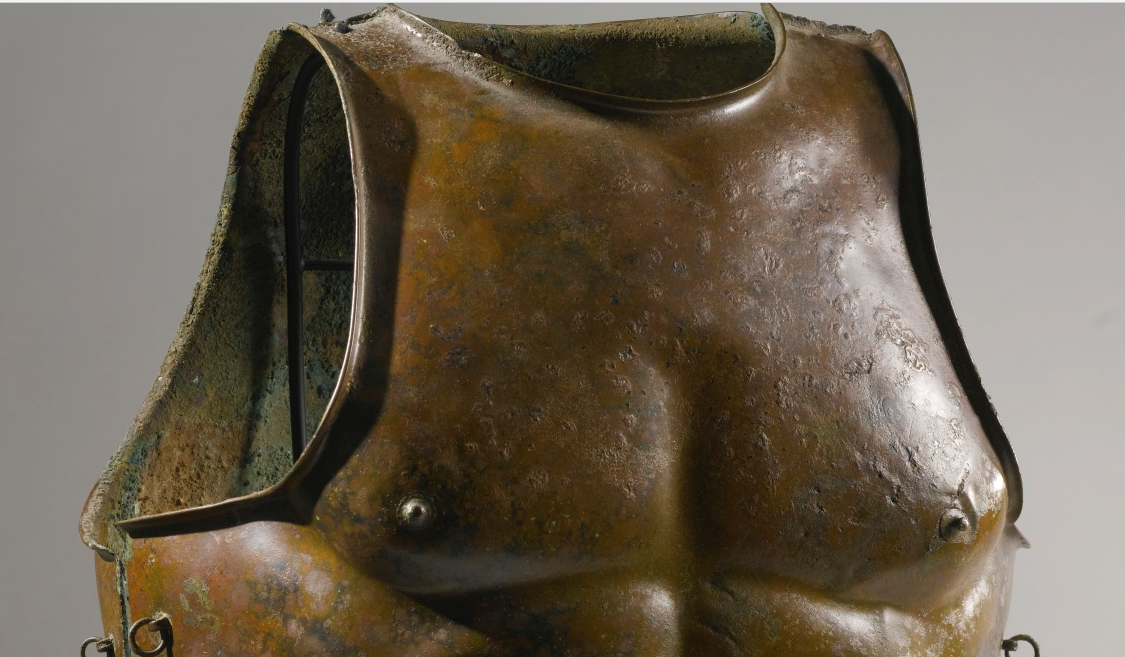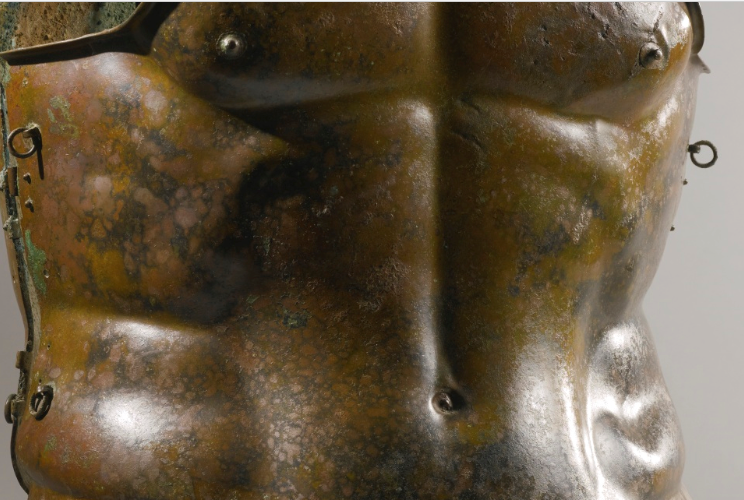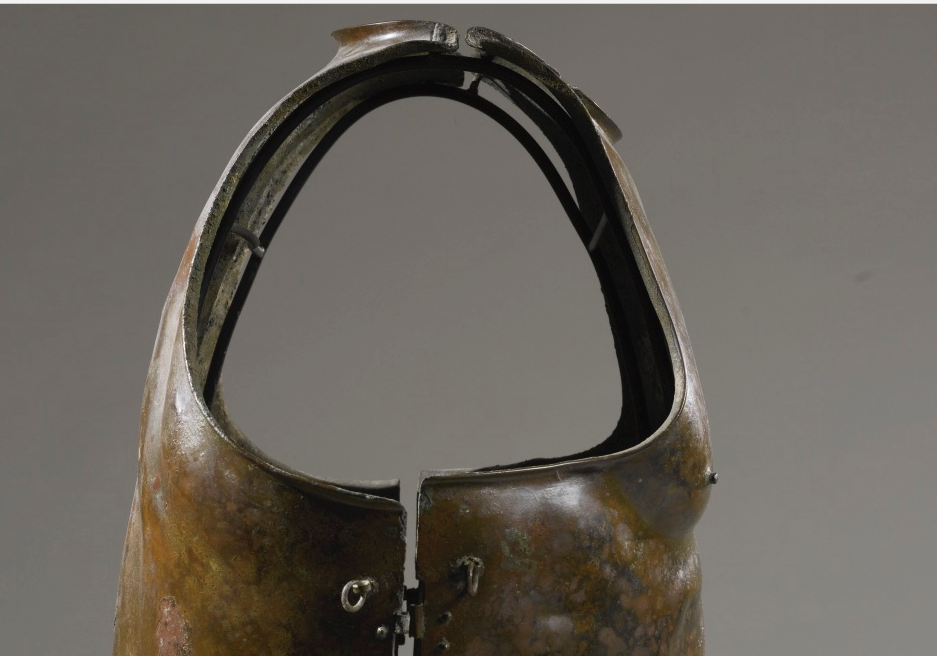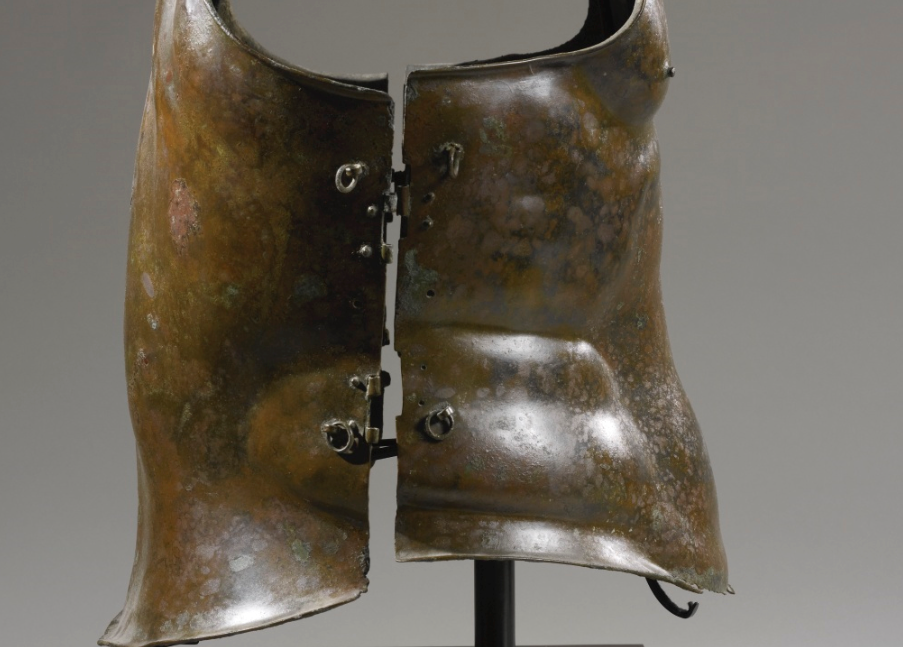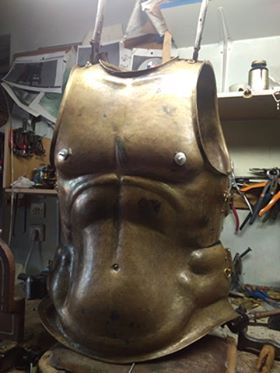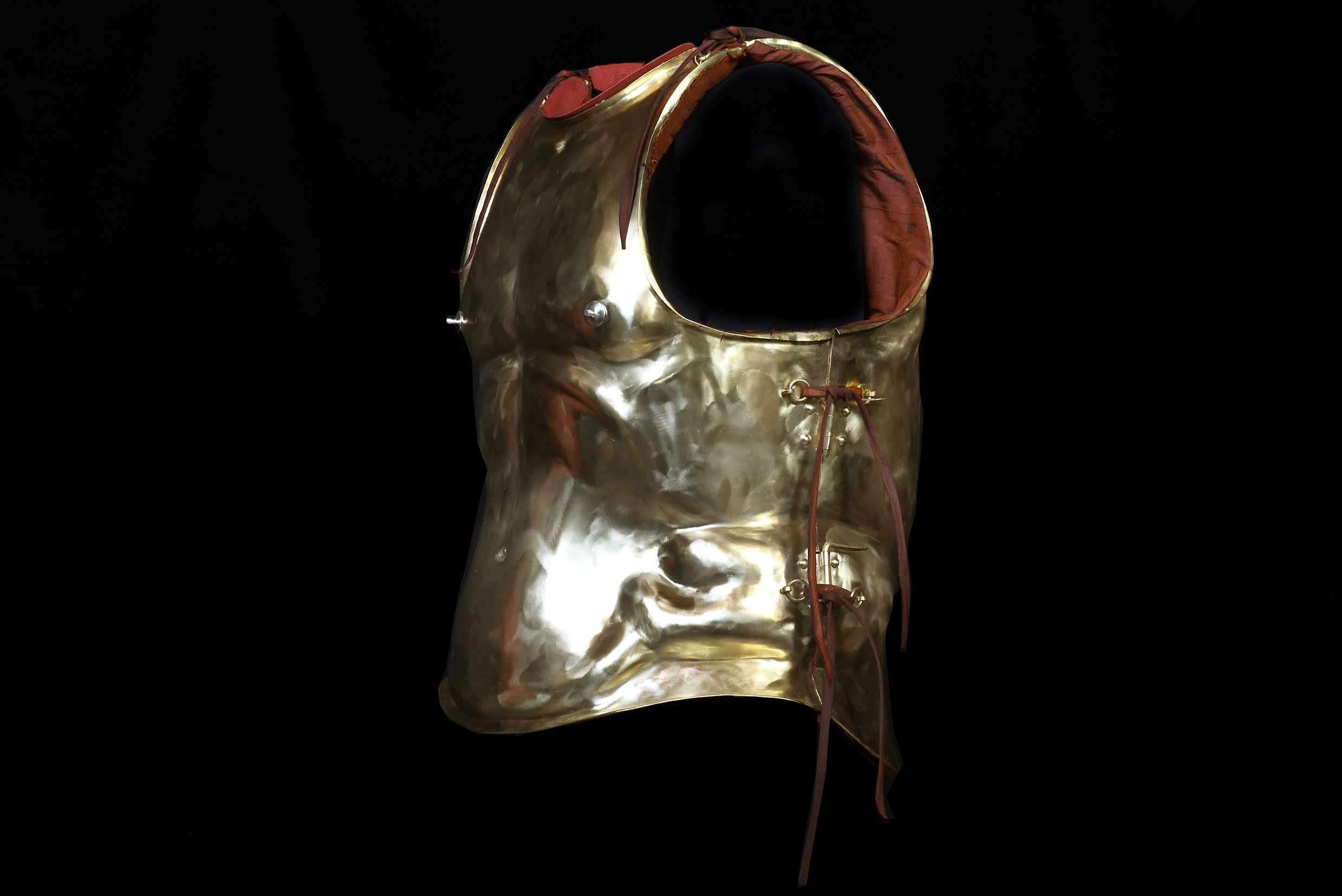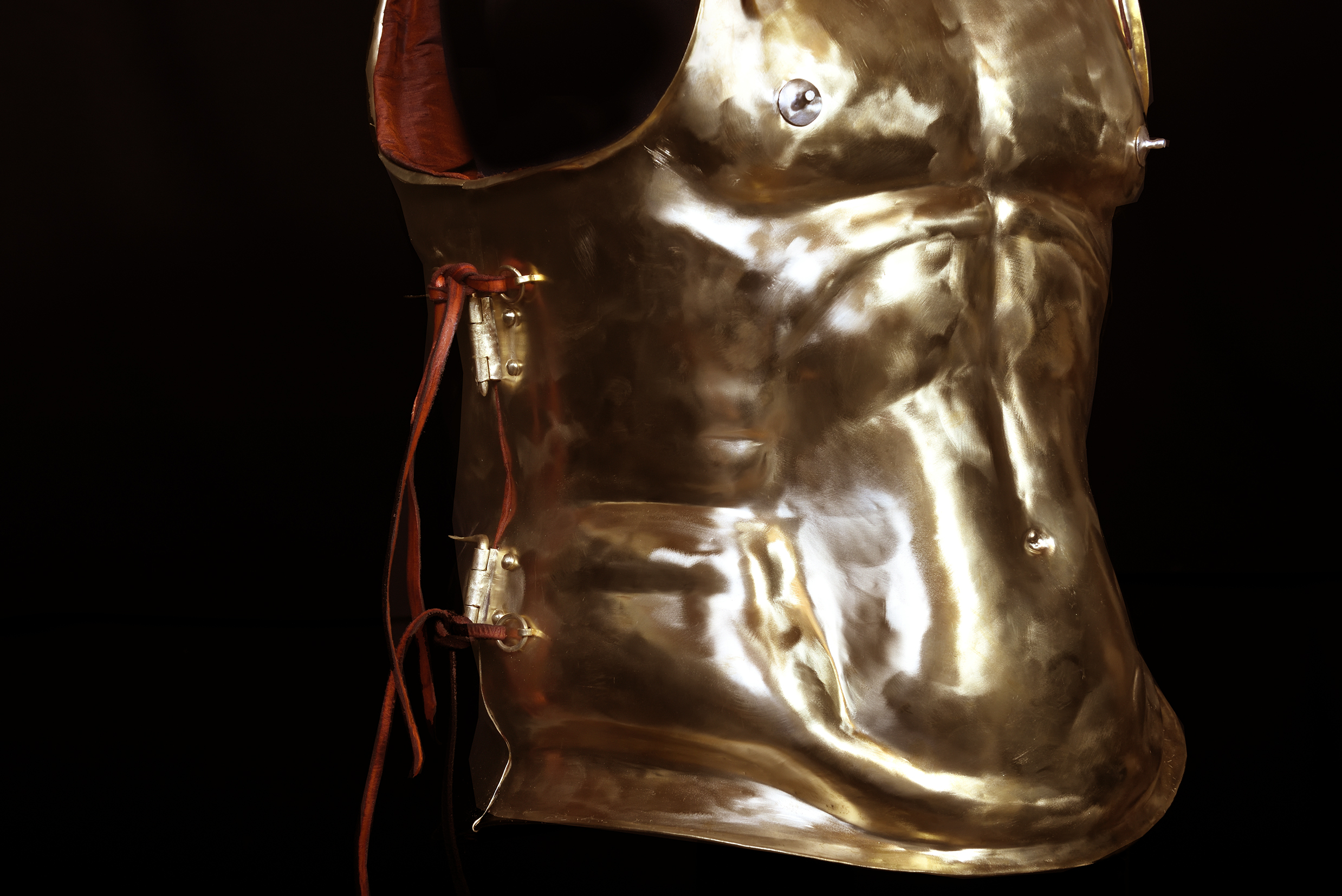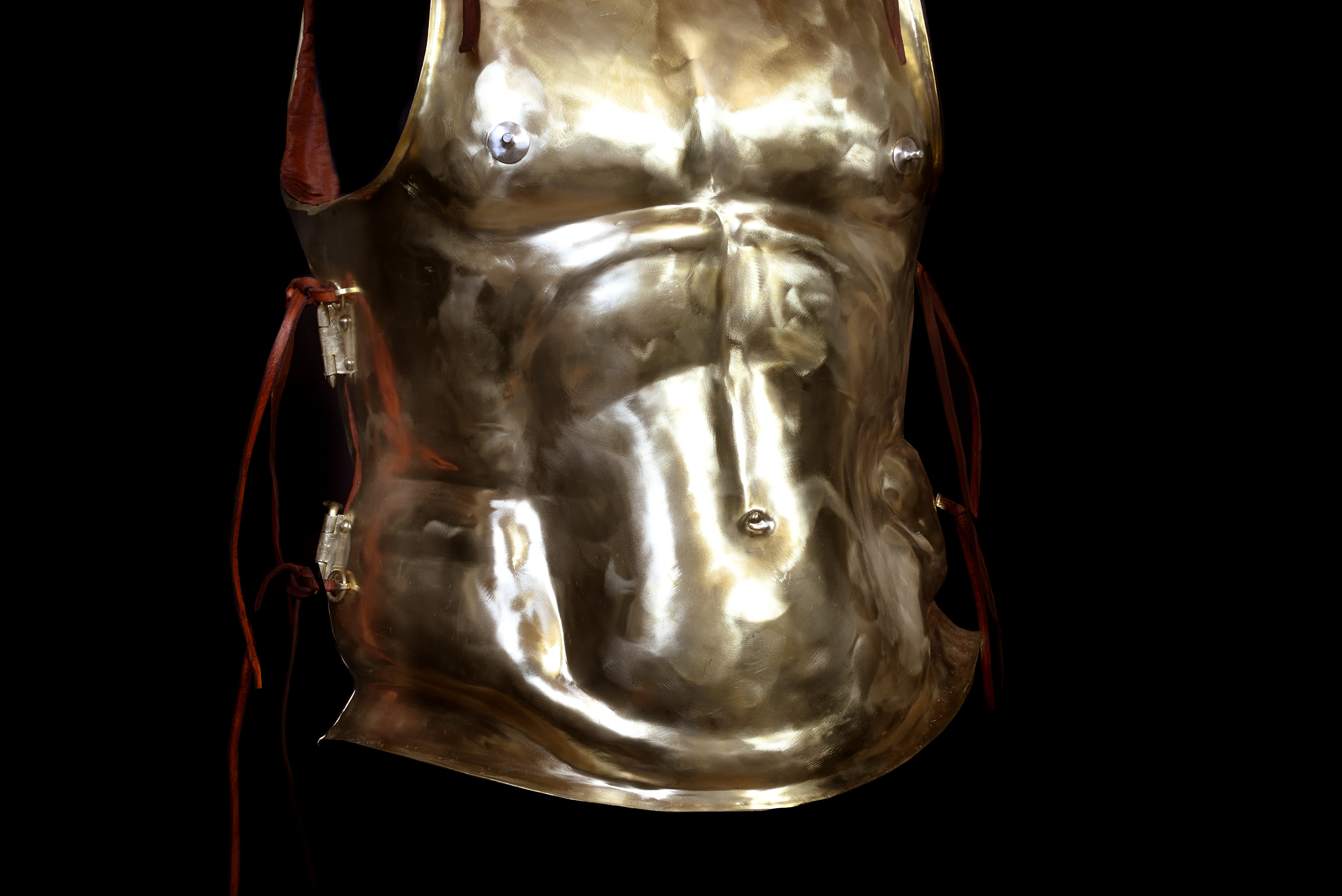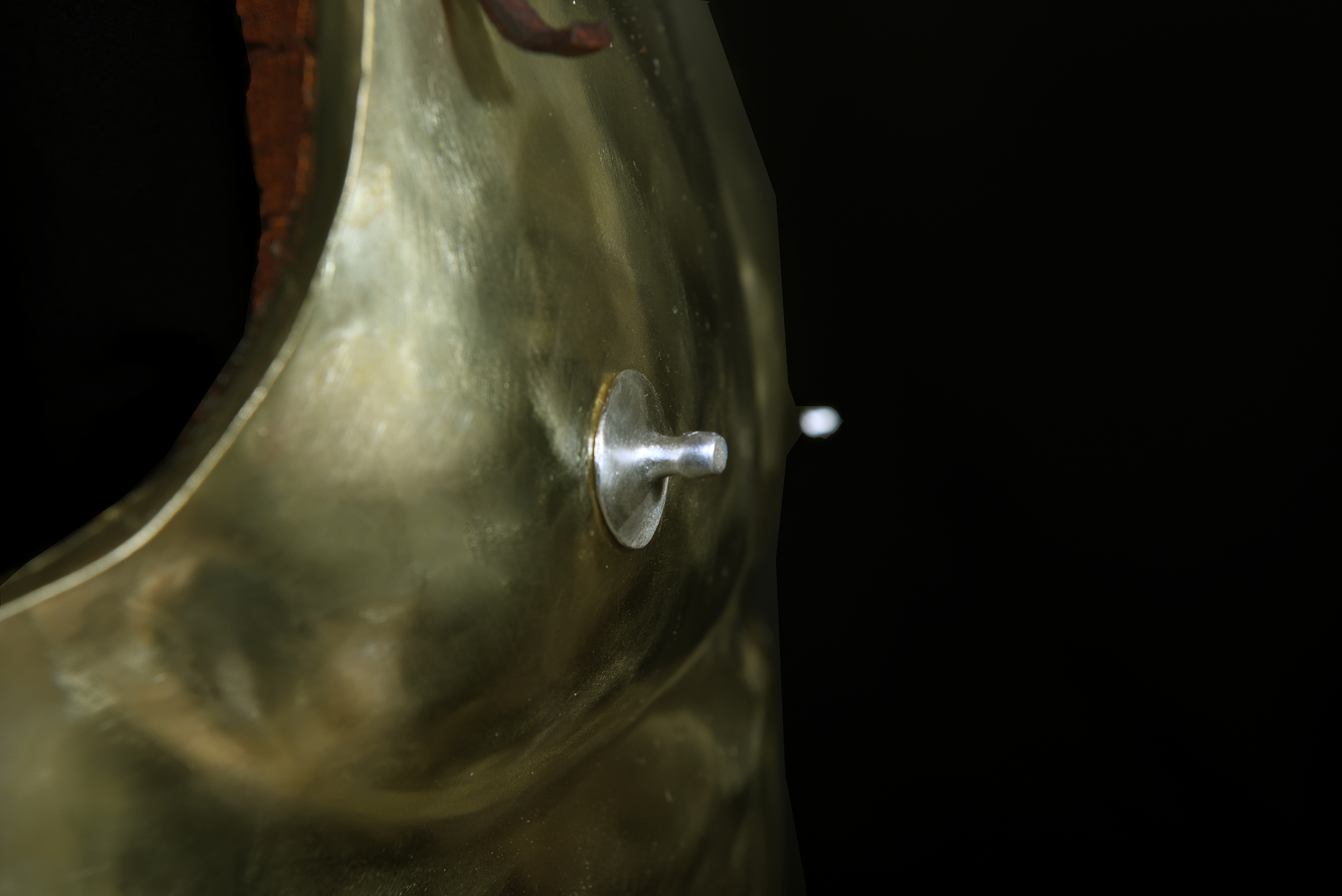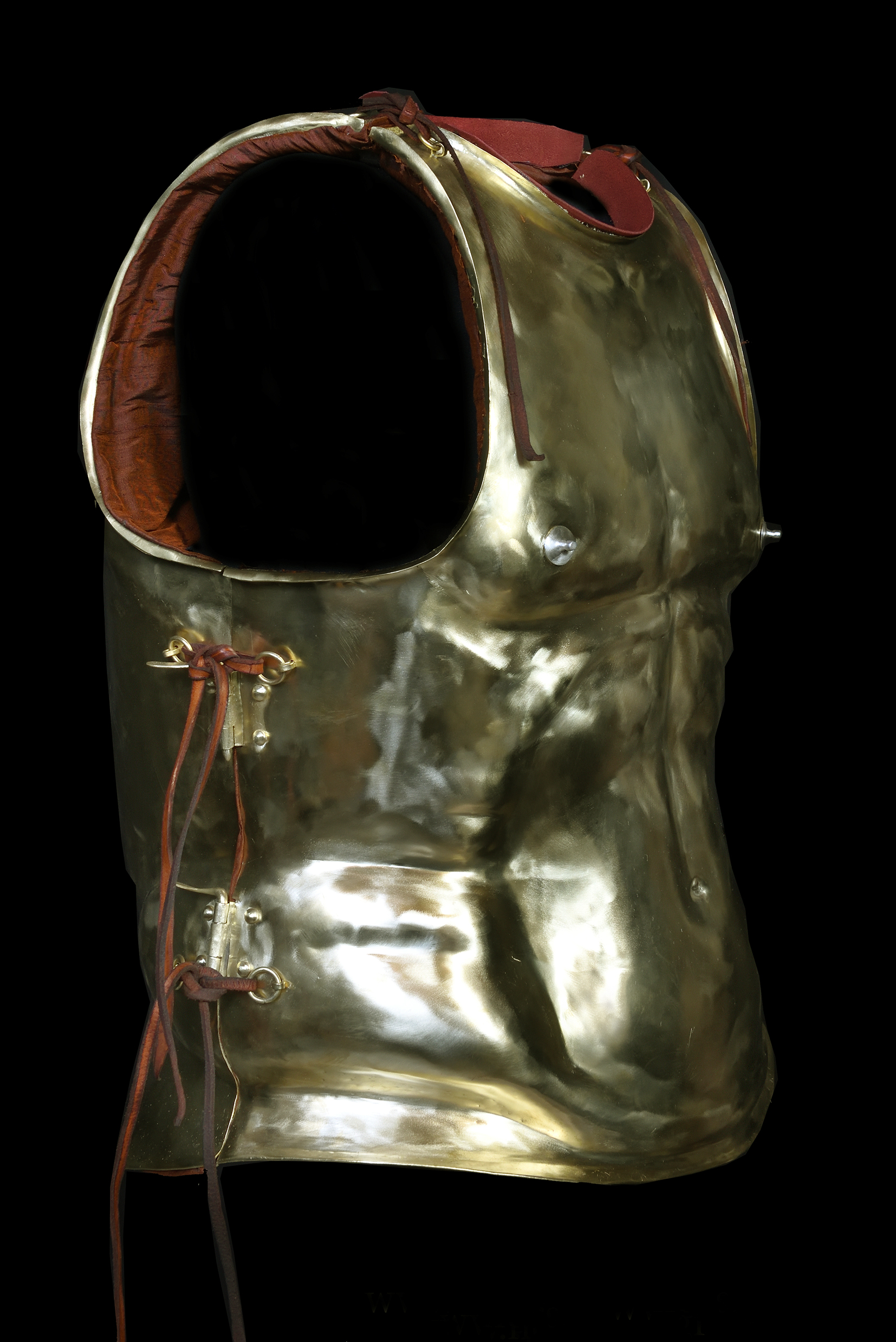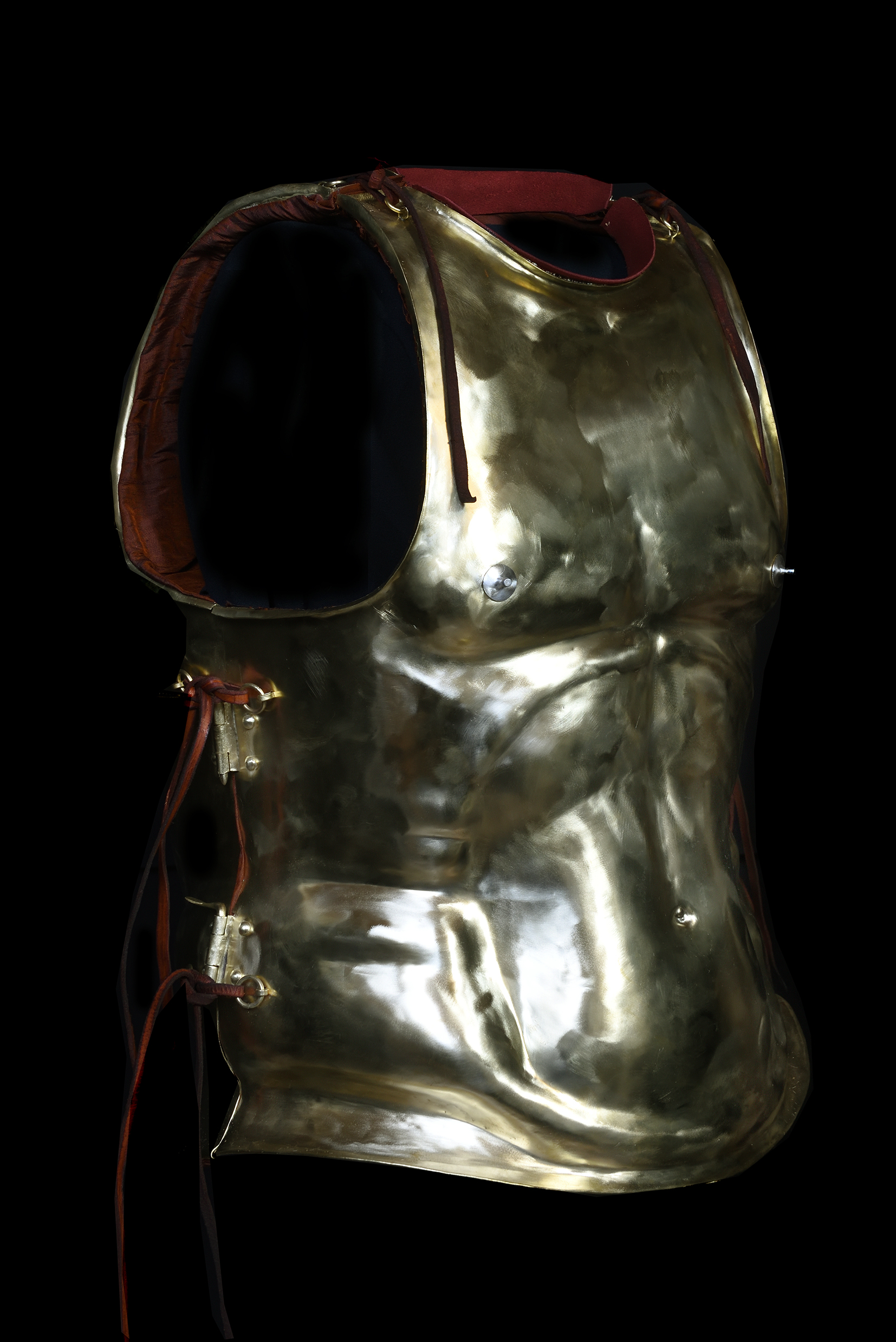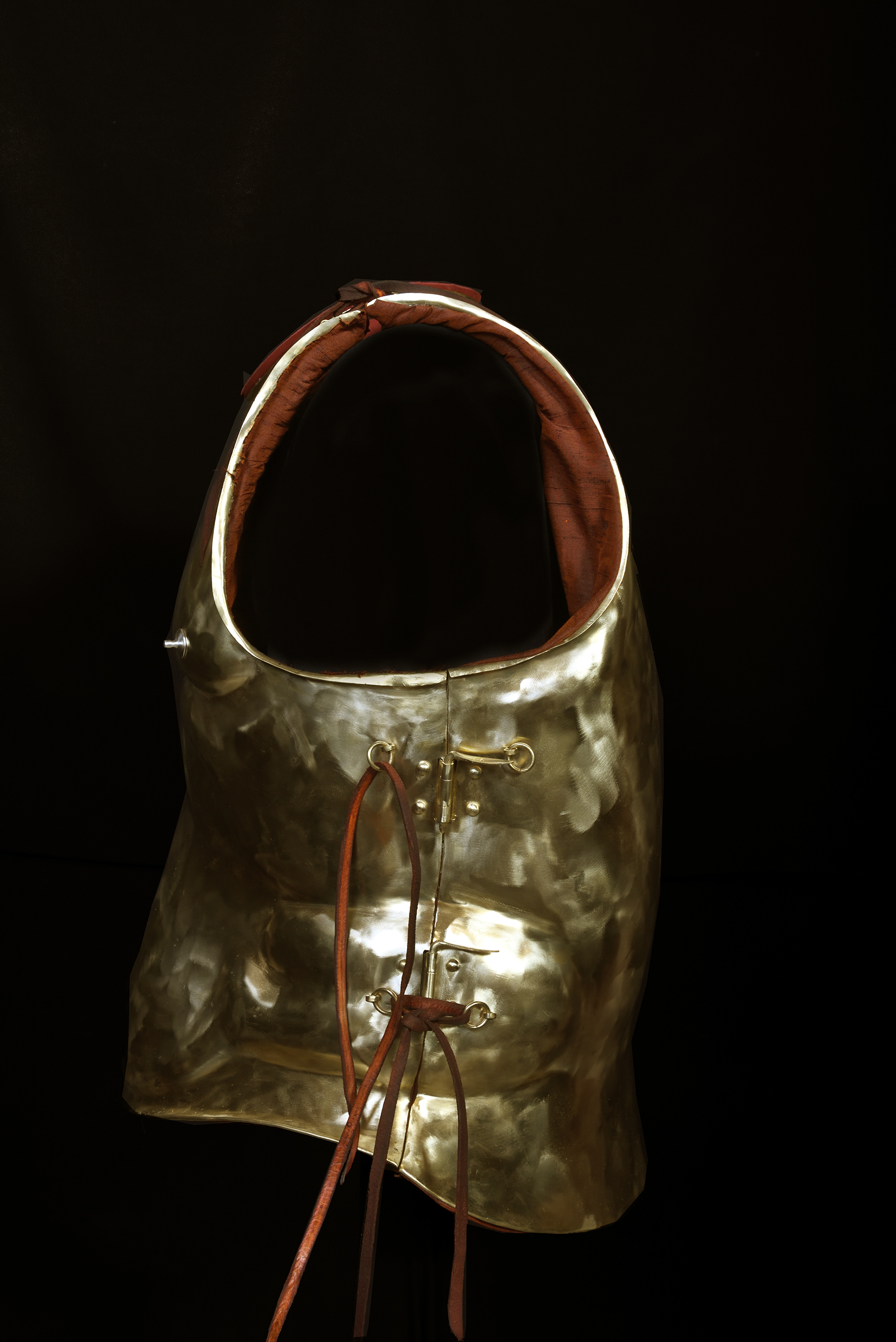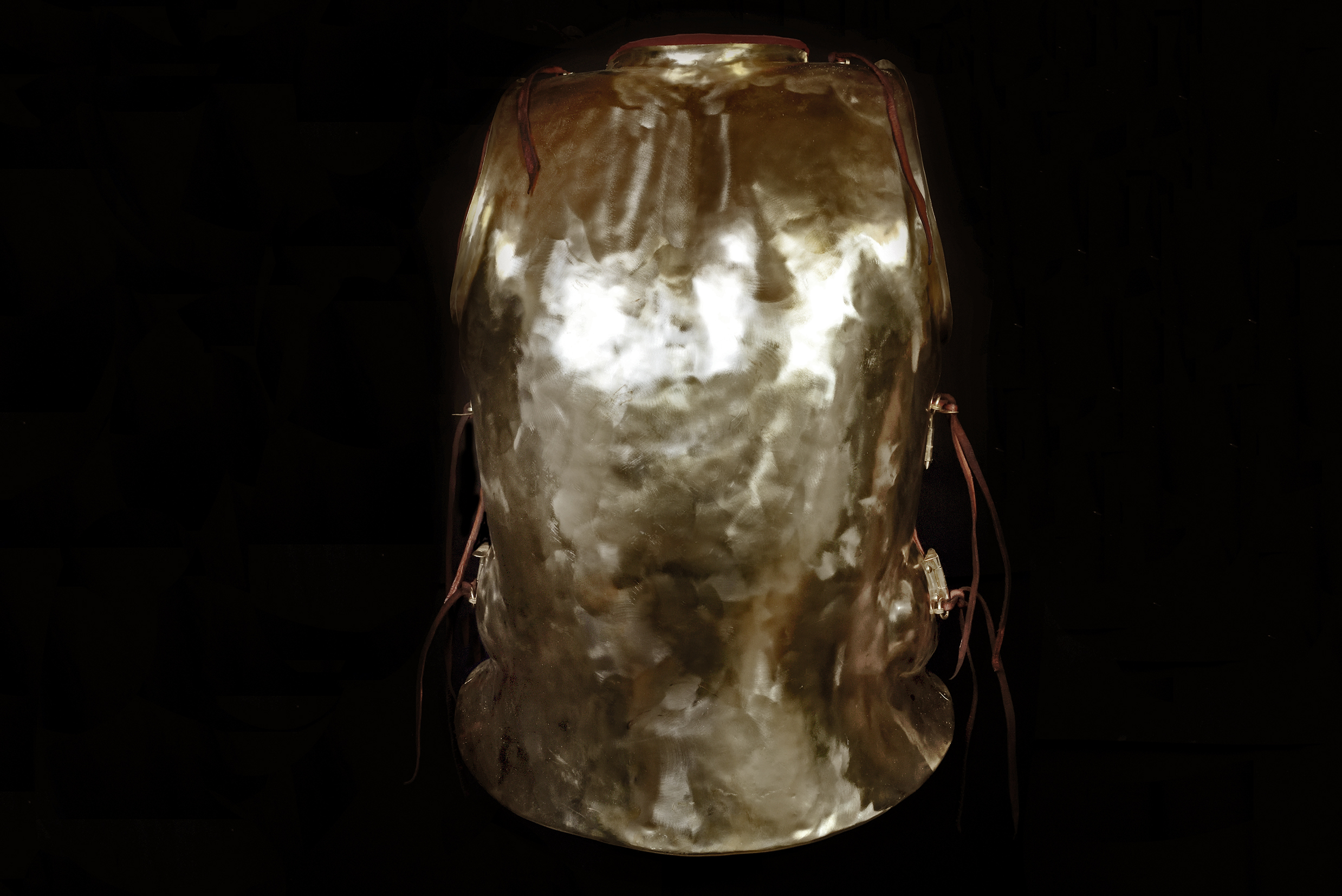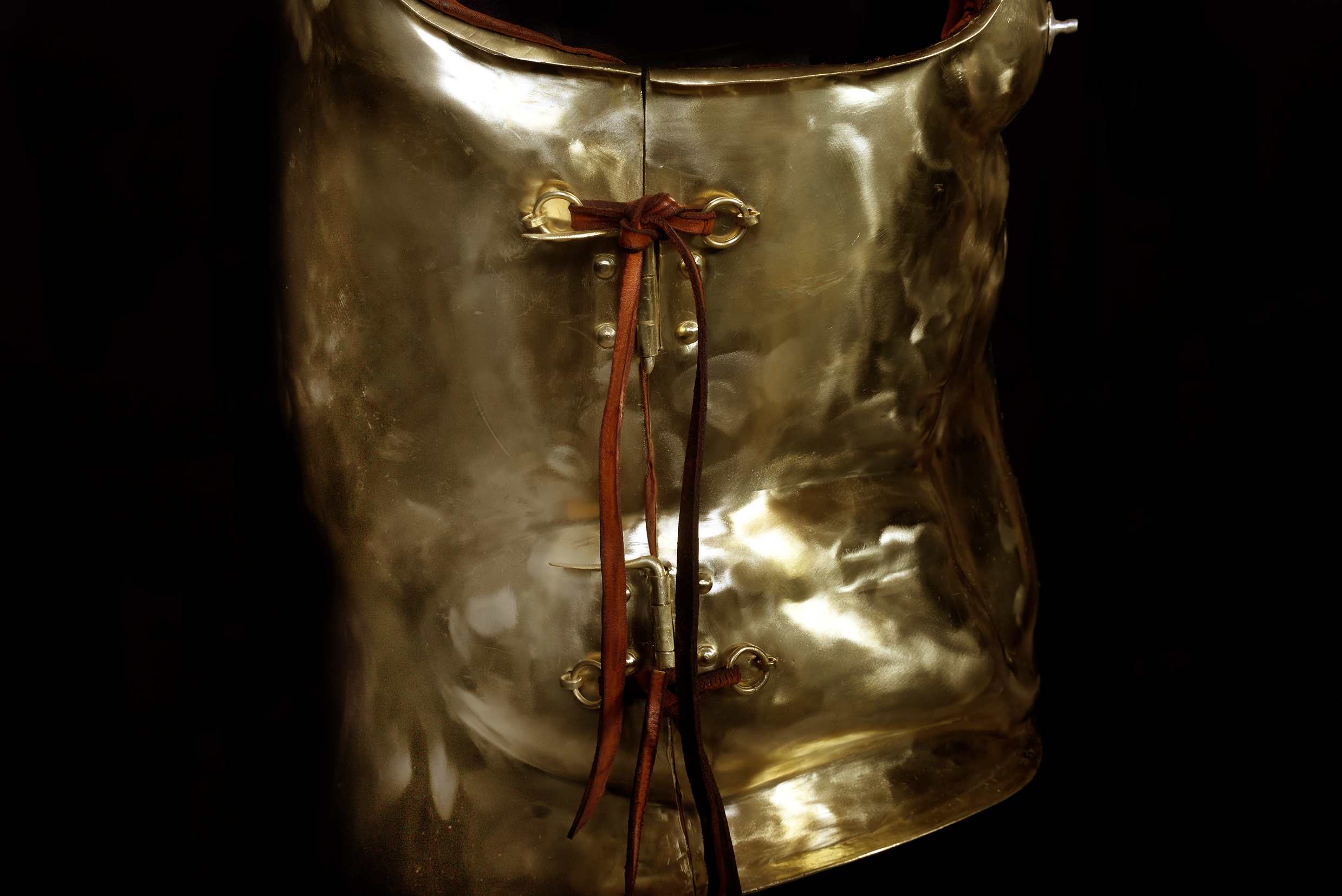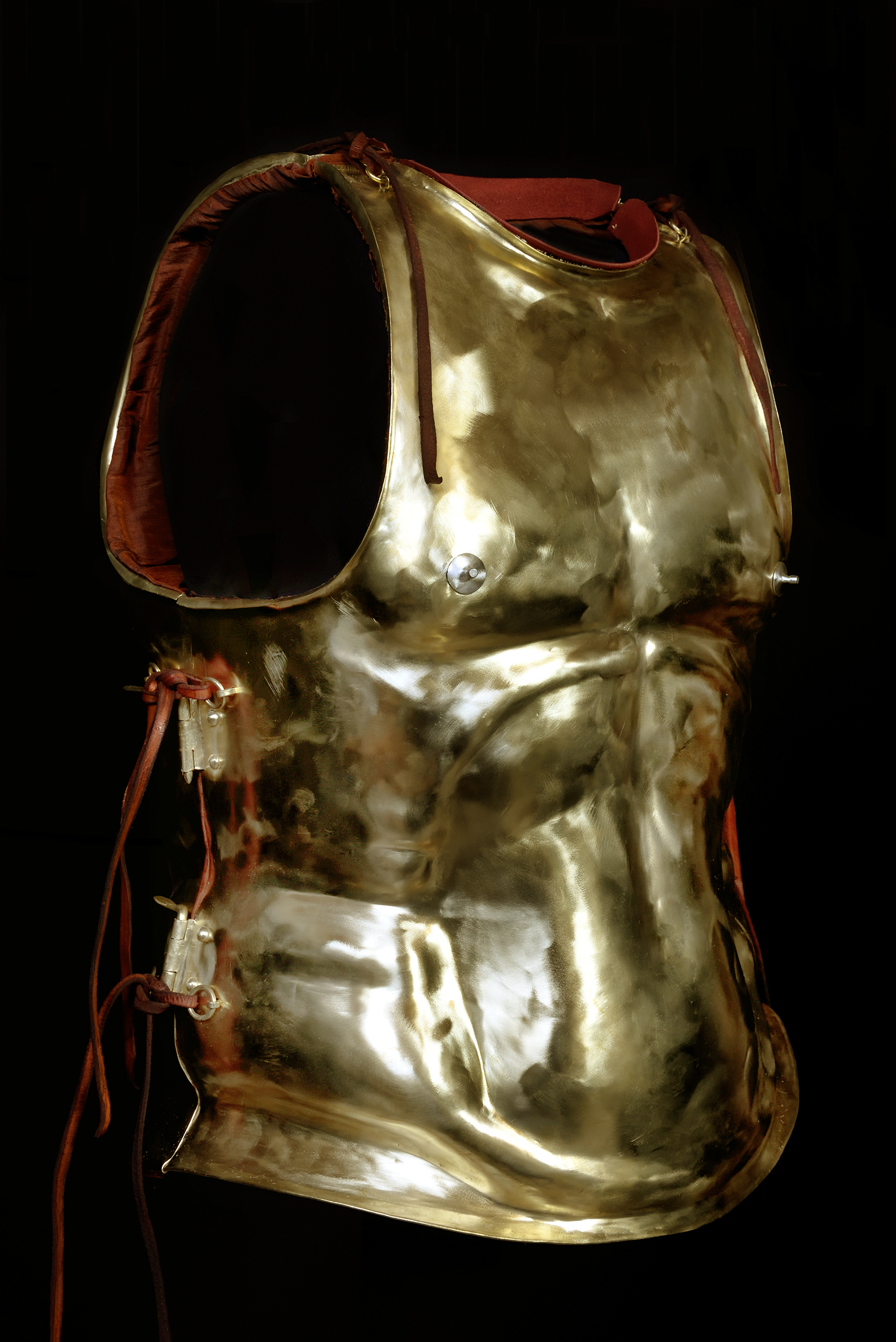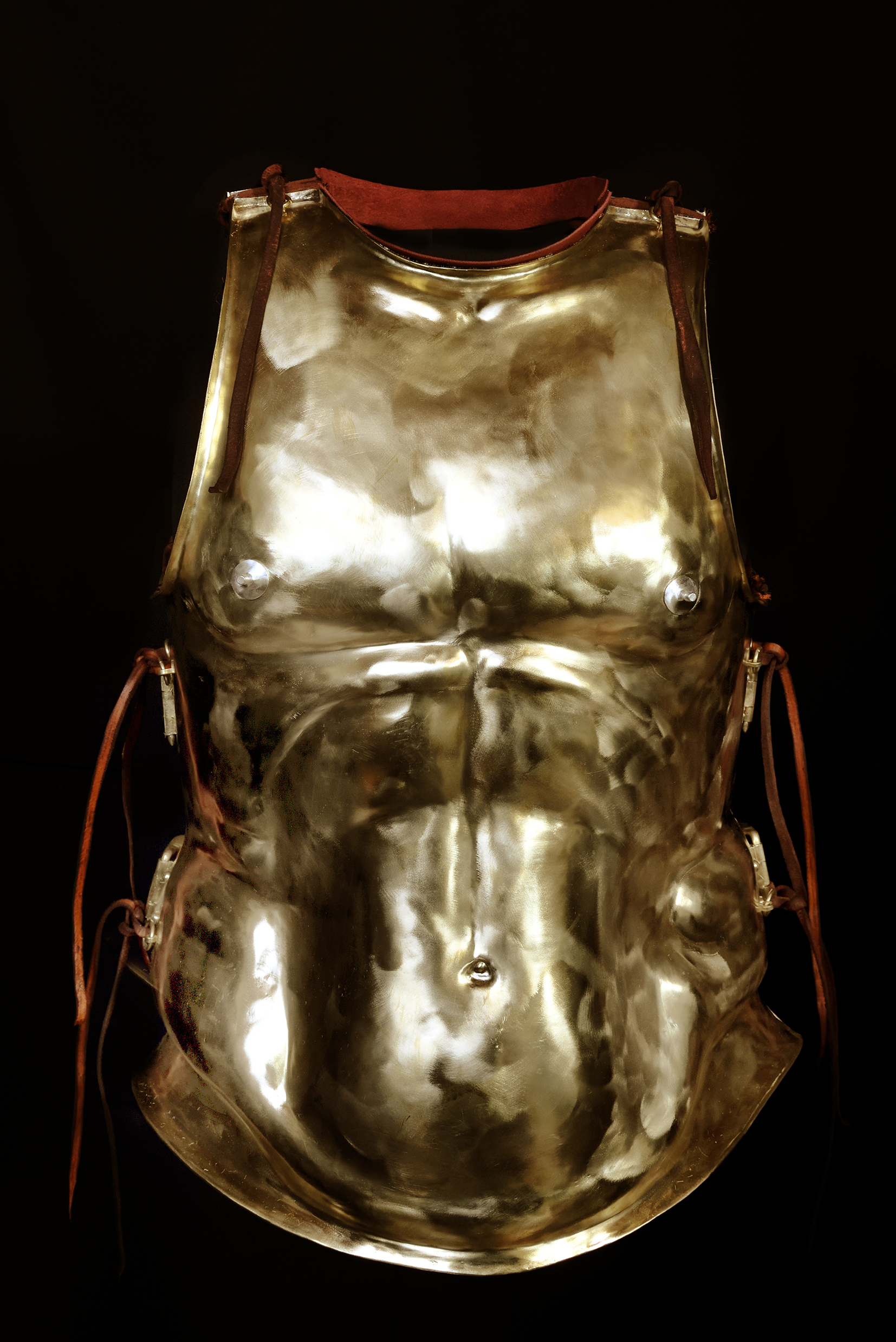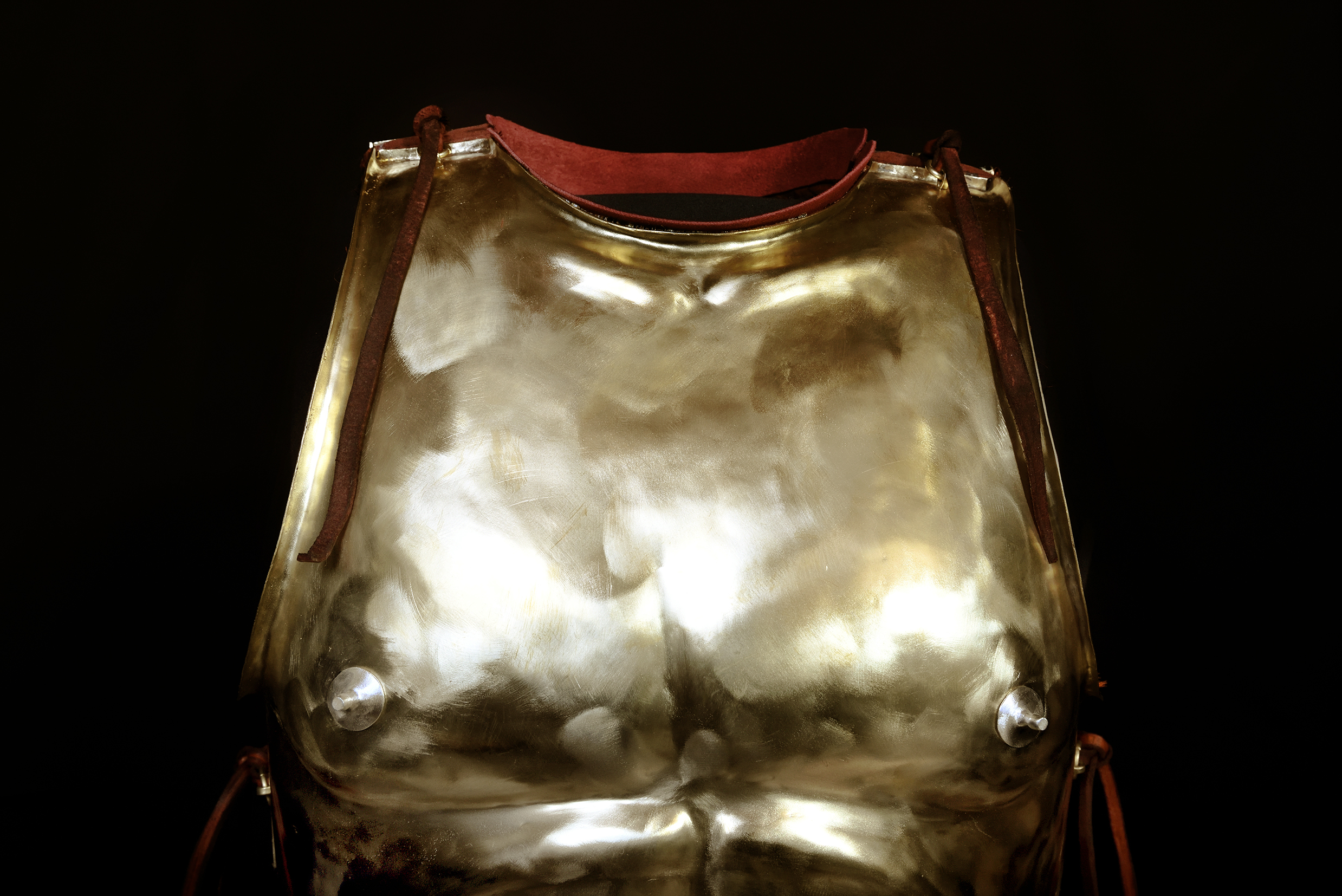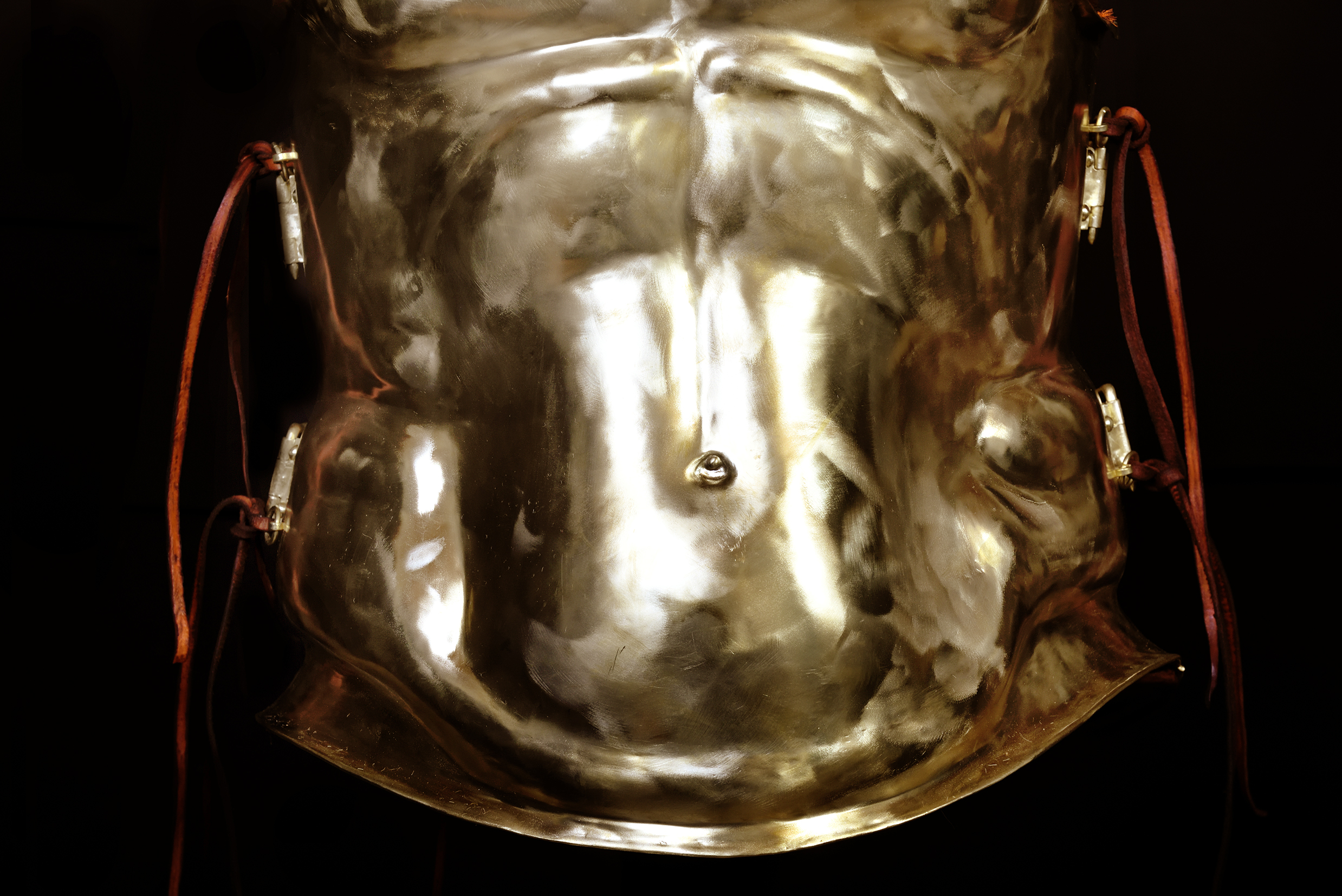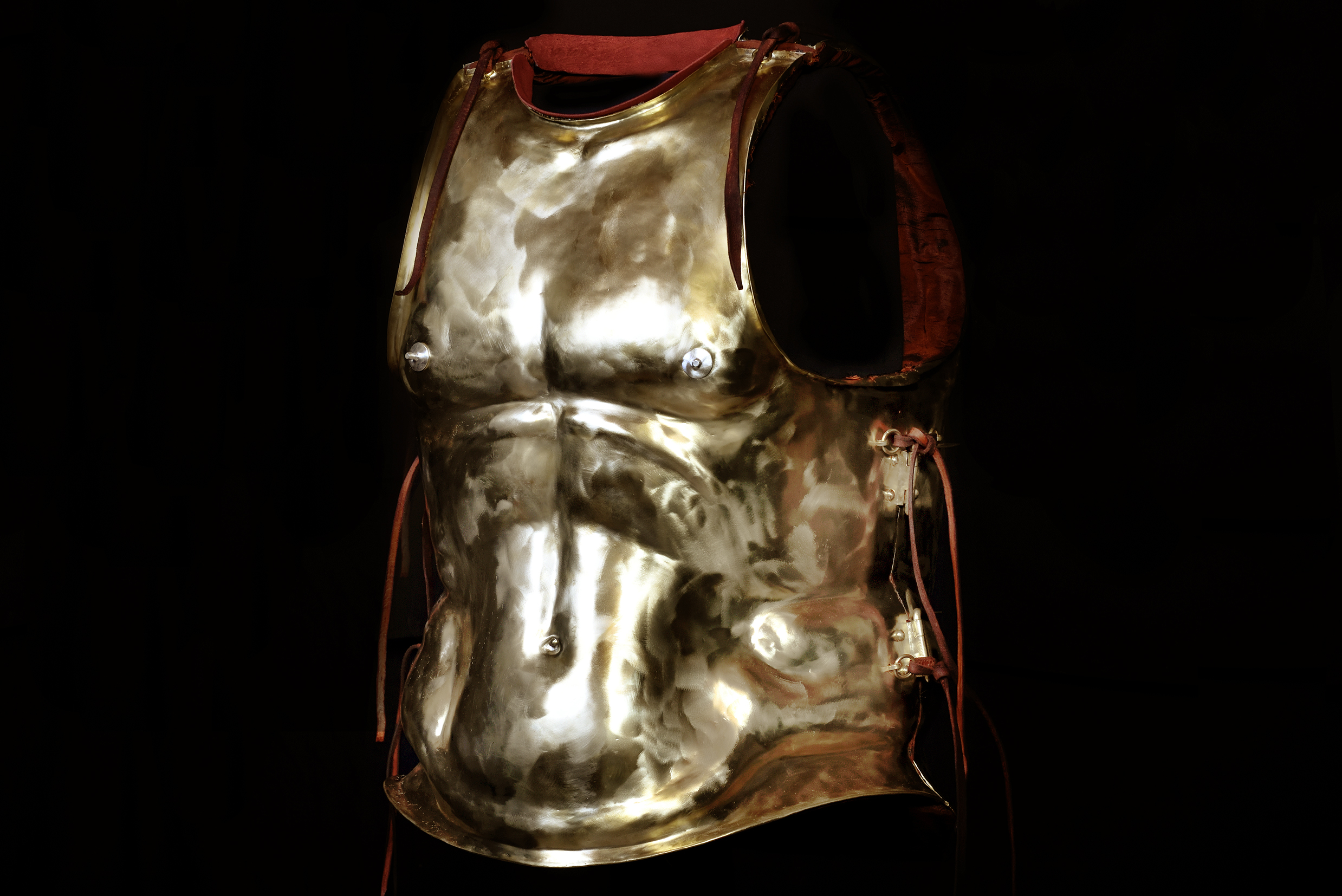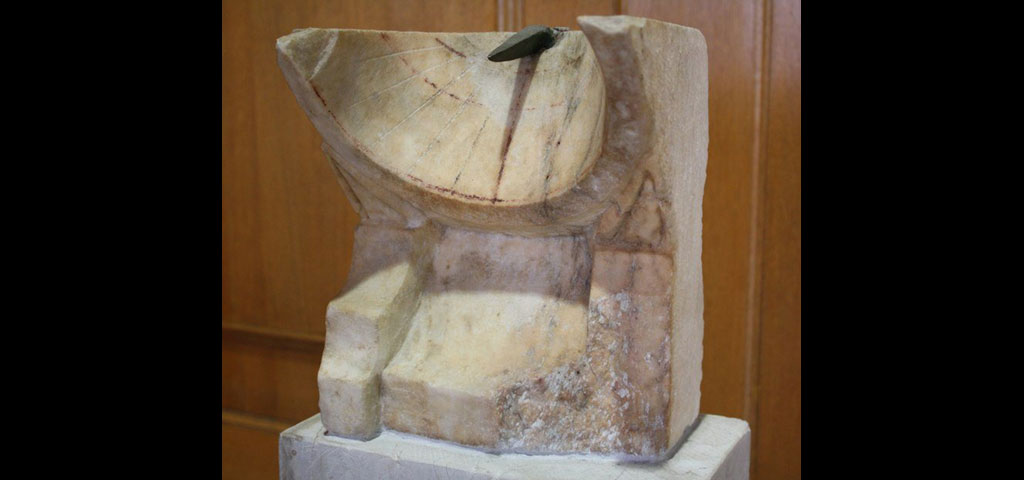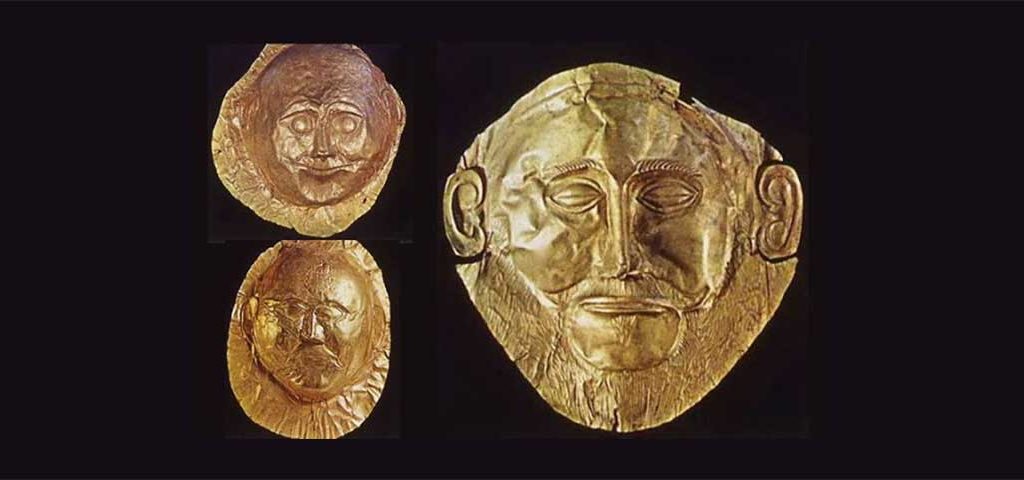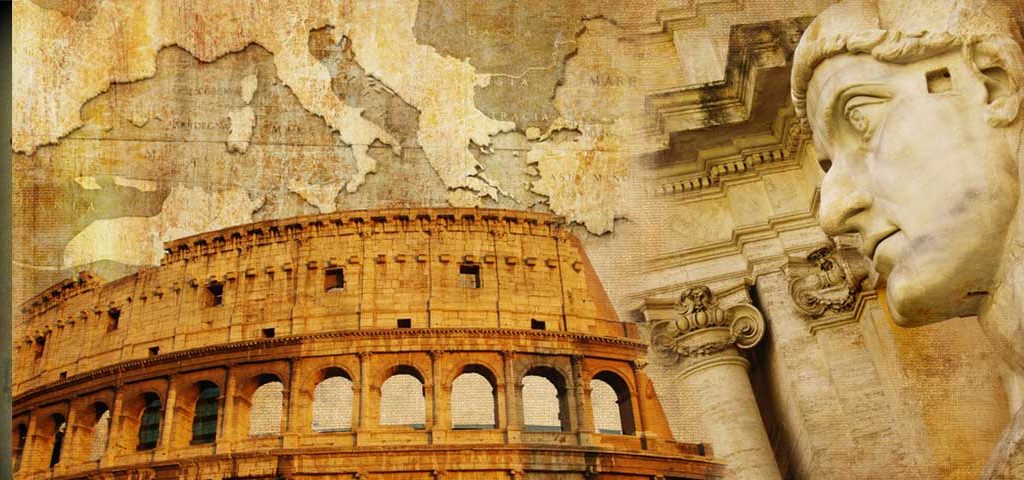Ancient Greek Armors
Μuscle cuirass “Lyssipos”
4th century B.C
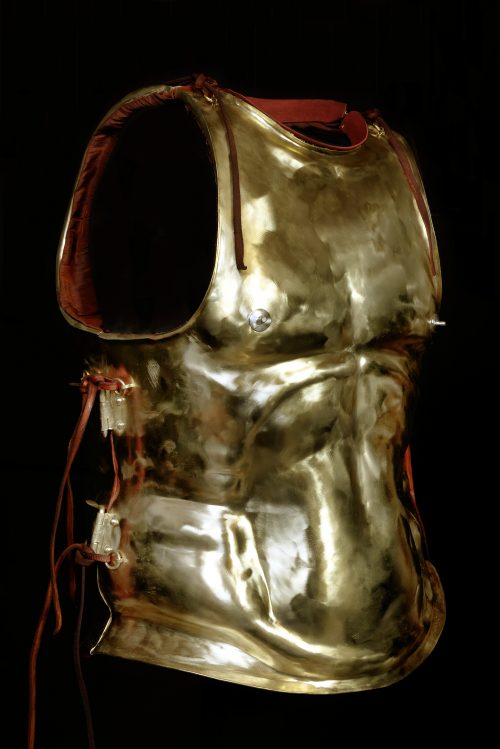
The recreated thorax have been based to a magnificent intact specimen of Greek artistry ( developed aesthetically more as a sculpture than an armor) dated to 5-4th century B.C.( Sotheby’s gallery. B.C. Holland/Objects Inc., Chicago, inv. no. D80-1-14).
The cuirass is being consisted by two separate bronze pieces, the pectoral and the dorsal plate (around 1,2mm thickness) and has been modeled according to authentic archaeological finding which imitate the anatomical idealistic features of an athletic male physique. The heavily built bronze torso includes :pectoral muscles, abdominal muscles, elaborate navel and inset nipples (made of cast silver)
All the edges of the plates (neck, arm, lower body) have been rolled inwards in order to prevent chafing and discomfort.
The two plates being held together through a system of ring fasteners by means of “butterfly” pins (six pairs) and riveted tubular hinges with pins (four such pairs-under armpit areas).Most probably these rings would have had ties, presumably made of durable leather cords!
Τhick woolen padding and silk lining covers all the internal surfaces of the cuirass. Padding was necessary for the protection of the skin from abrasion and heat and to absorb wounds and, of course, to stabilize the whole structure on the torso effectively.
The formation of the metal sheets was achieved exclusively with traditional hot raising (combined use of anvils and hammers) by the Athenian metal artist Dimitrios.
